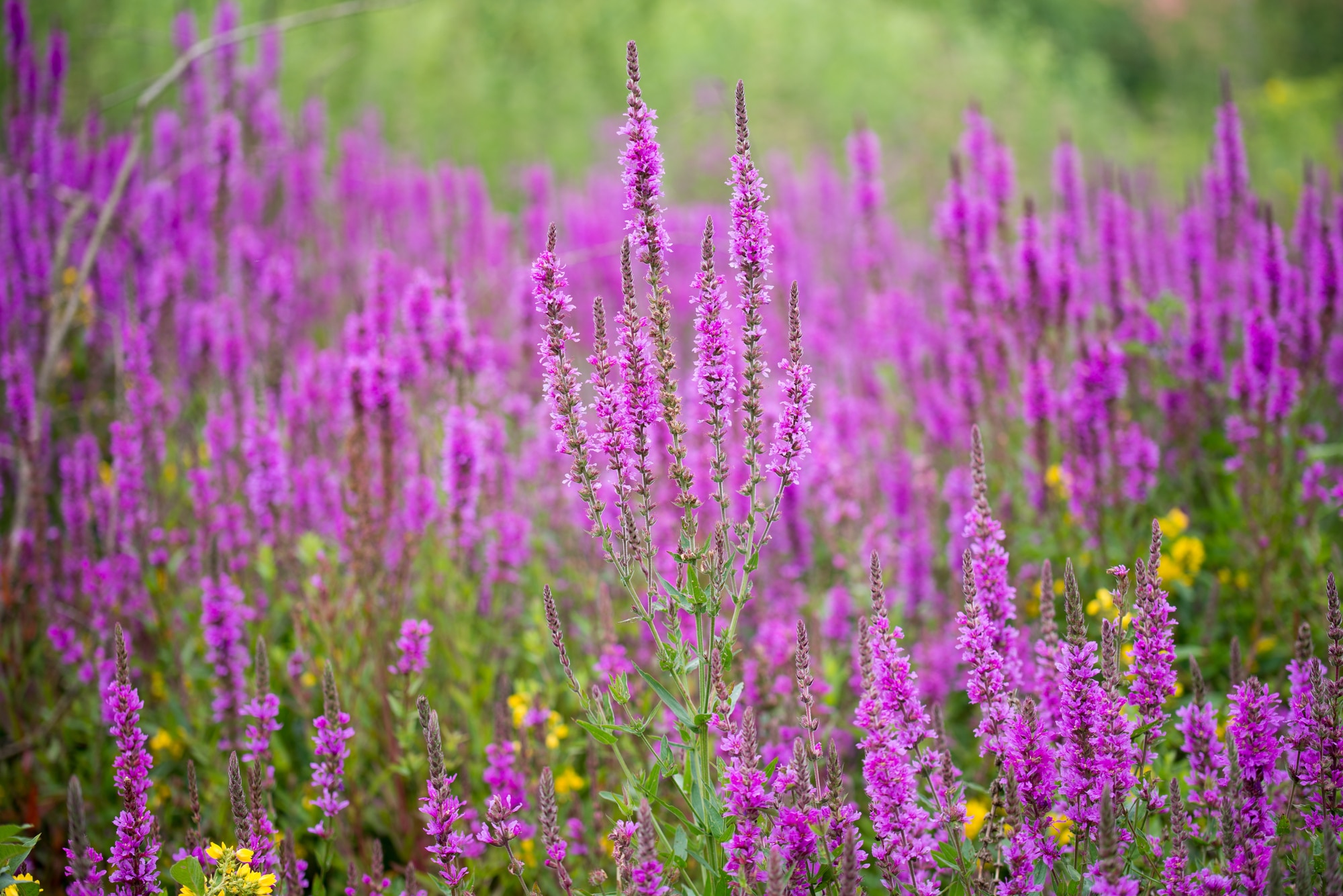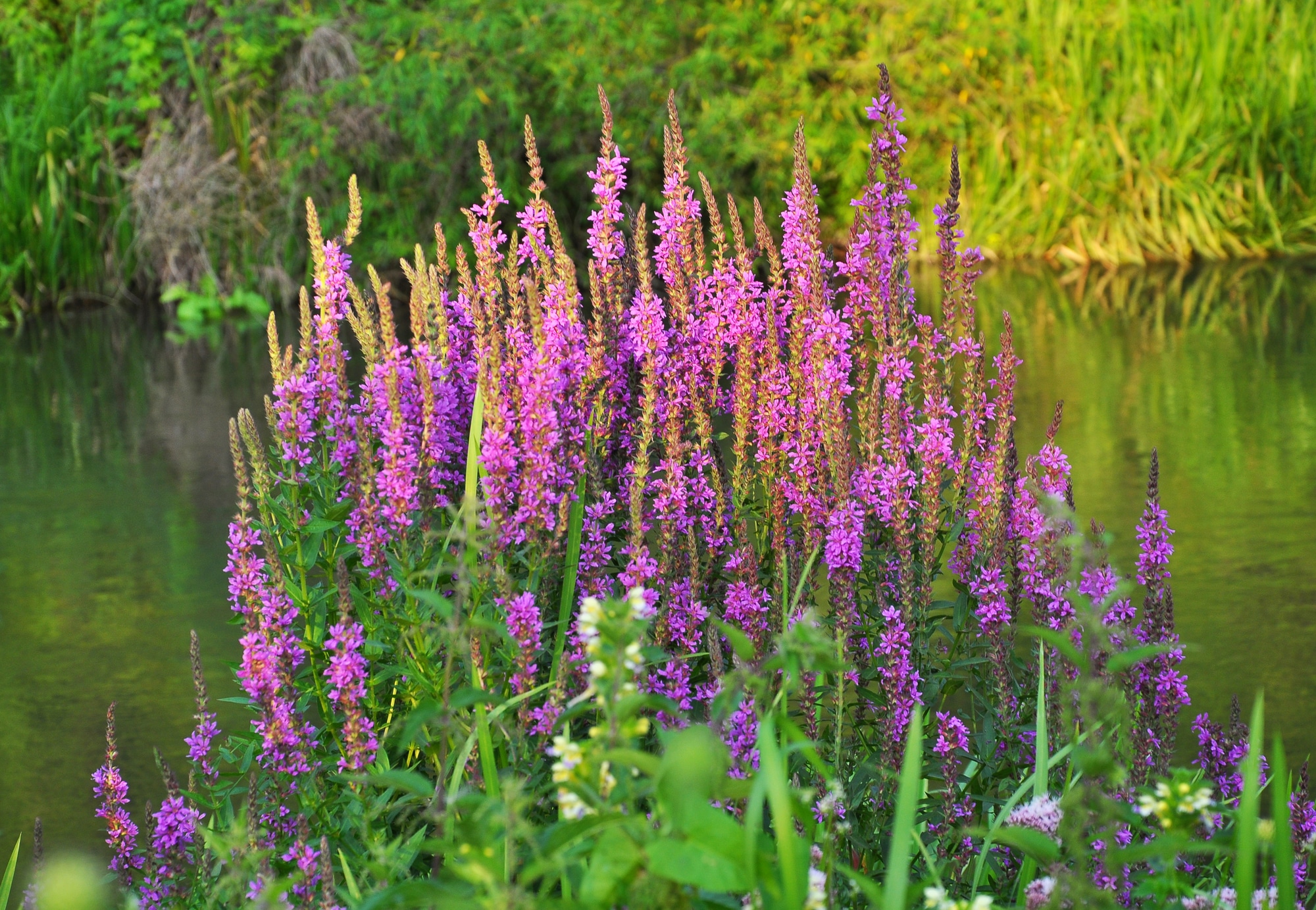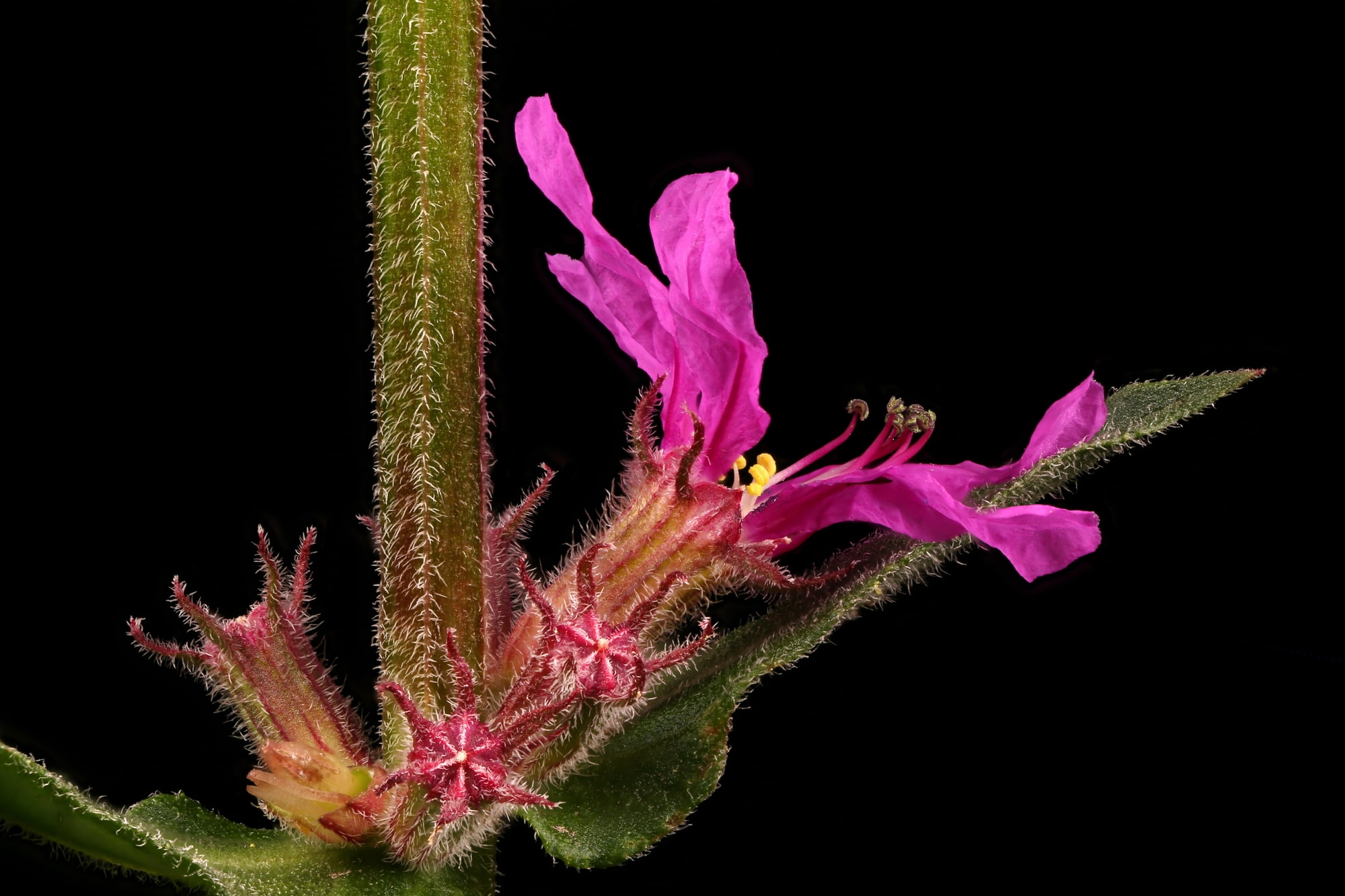Purple loosestrife is an invasive perennial herbaceous plant that grows on the shores of lakes and rivers as well as in moist, shaded areas around ponds and marshes. The closest relative of purple loosestrife is another invasive plant called yellow loosestrife (“Lythrum salicaria”). The two are known for forming impenetrable stands where they grow, causing havoc for native animals and neighbouring native plants. They are extremely similar in appearance and often hybridize when they are in close proximity.
How To Identify Purple Loosestrife
Purple loosestrife is an erect plant with thick upright stems and roots. The tall plant can reach two meters (6 feet) in height and 1 meter (3 feet) in width.
The many tall stems are covered with fine hairs. On the underside of the stem are conspicuous bright purple flower spikes hanging down throughout the lower part of the stem. These impressive spikes of magenta flowers bear clusters of flowers grouped in umbrella-like inflorescences.
The flowers of purple loosestrife form dense stands and grow either individually or in groups of two or three. The flowers have five petals fused together into a bell shape that varies in colour from purple, red, orange or pink.

Where To Find Purple Loosestrife
Purple loosestrife can be found in wet habitats such as lakes, rivers, bogs, wetlands, and wet meadow areas. Its flowers are very inconspicuous but can be seen along roadsides where they spread over the ground.
It is often found growing in groups on the shoreline of lakes with wet soil that has nutrients available for it to grow upon. It spreads both vertically and horizontally by seed dispersal and floating submerged seed into new areas that have moist soil or where roots have developed around drainage ditches.

Flowering & Distribution
Purple loosestrife’s natural distribution includes Europe, Asia, and North America. It is widely distributed in eastern North America, where it prefers moist soils along watercourses. It has been introduced to South Africa, Australia, New Zealand, and many other parts of the world.
The flowers are pollinated by bees and other long-tongued insects. It flowers from June to August, and during that time, its nectar becomes a valuable food source for insects such as Brimstone butterflies and Elephant Hawk-moths. Its seeds are dispersed by flowing water and wind through the underwater vegetation of streams, rivers, and lakes.
Is Purple Loosestrife Poisonous?
Purple loosestrife is poisonous to animals and humans. It contains alkaloids that prevent the animal’s blood cells from absorbing oxygen. Symptoms of poisoning include dizziness, weakness, slow heart rates, difficulty breathing, and sometimes death.
How much the plant needs to be ingested for poisoning to occur is unclear; however, fresh or wilted leaves or stems typically result in severe illness or death if the animal consumes more than a few kilograms.

Is Purple Loosestrife Invasive?
Purple loosestrife is a highly invasive weed that is harmful to local ecosystems. In many countries, purple loosestrife is now a problem where it has been introduced because it grows quickly and spreads easily through its shoots which are poisonous if ingested.
If you see purple loosestrife growing outside your yard (or anywhere else for that matter), you should consider removing it to prevent it from spreading.
Additional Resources
Sources and References
- Purple Loosestrife (Toxic Tuesdays: A Weekly Guide to Poison Gardens) – blogs.britannica.com
- Purple Loosestrife (Lythrum salicaria) – invasivespeciescentre.ca
Sam loves to learn about animals and their habitats. He has been a nature lover from a very young age, and has been writing papers and articles about wildlife for as long as he can remember.

I found Purple Loosestrife growing in a shaded and moist area of my garden. When I didn’t recognize it in it’s early stages, I decided to let it grow until I could see what it was. Now I know, so I need to get rid of it. This is the first time I have seen it and there is only one plant. What would you suggest that I do? E.g., I am thinking of just pulling it out by the roots, and disposing of it in my garbage. Will that be sufficient?
Thanks in advance!
Emily
Yes that would be fine, but please ensure to wear gloves